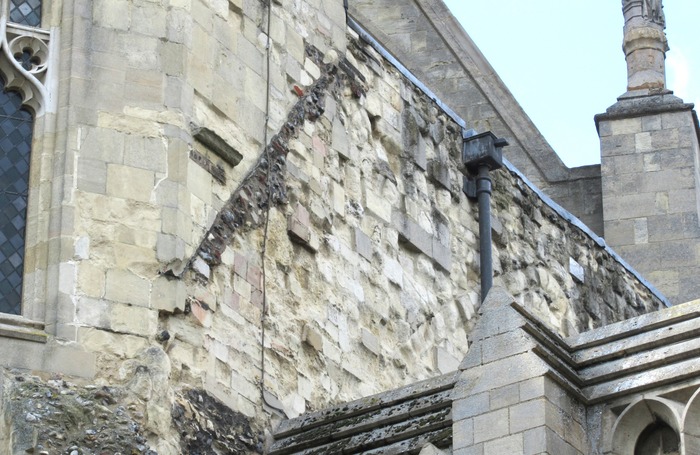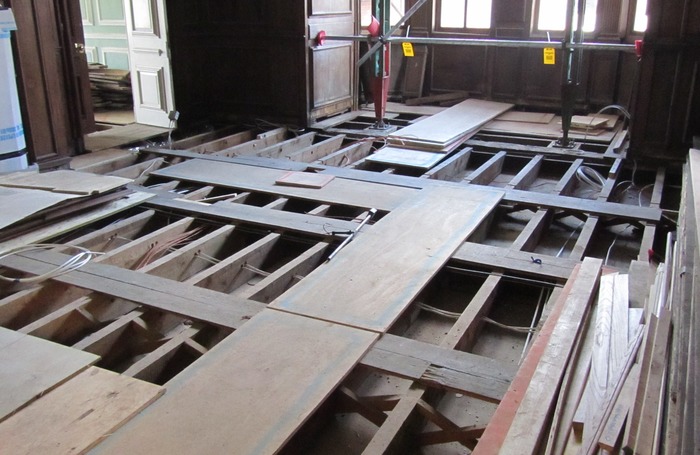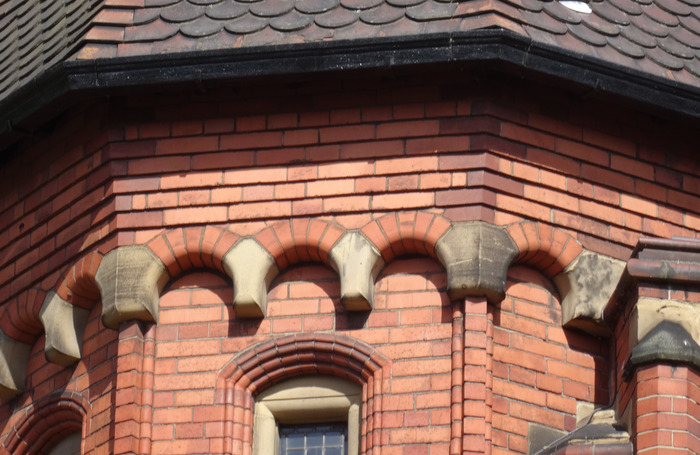As part of a series of blogs about the way in which digital technology is transforming architects’ work, Ingval Maxwell, a consultant in architectural conservation, discusses some of the challenges and opportunities that BIM poses for his sector.
Having spent over half a century being involved in architectural conservation, it is salutary for me to reflect on how dramatically working practices have changed – particularly with the introduction of IT.
At the heart of any complex conservation project is the need for an accurate survey of what remains. In the pre-digital age, onsite measurements often required an expensive access scaffolding to be built as a first step. The use of tools such as full-size templates, plane tables, alidades, dumpy levels and optical theodolites all required an appropriate expertise and skill level.
One advantage of these manual processes was that the surveyor was forced to take a long, hard look at what was being recorded, what it was made of, how it was constructed and the nature of its performance (in the elements and with use) over time.

Yet remote forms of surveying are nothing new. They have been with us ever since the invention of photography, with photogrammetry emerging in its basic form in the 1850s and developing through analogue and analytical phases to become the forerunner of today’s digital surveying industry.
3D scanners, using triangulation techniques, started to appear in about 1980. Since then, the technology has grown exponentially in development and availability.
Today, with highly detailed point clouds, added photorealism and remote-piloted aerial vehicles overcoming access issues, a completely new approach to working practices has systematically emerged. But with it there are also new challenges.
Building Information Modelling (BIM) has increasingly embraced collaborative processes for the structured production and management of electronic information in new build construction. Driven by the UK’s Government Construction Strategy of 2011, and the 2013 Construction 2025 report’s promotion of BIM benefits, an official mandate was set for public sector projects to achieve a BIM Level 2 target by 2016.
Along the way, in 2014 the Farrell Review noted that ‘Today, most architecture is subject to the design of components by others,’ and that the role of the architect ‘is increasingly about selecting, synthesising and integrating’ components. Within the new build sector, it is easy to see why and how the cataloguing of the sourcing, detailing and application of materials across the supply chain can be readily and appropriately assimilated into BIM processes.
However, applying BIM to existing built heritage creates a different set of problems that have not been considered in any detail. The heritage already exists in four dimensions – three being physical, and the fourth being that of time. All aspects need to be appreciated if their inherent significance and value is to be respected and retained.
Consequently, obtaining the relevant data could involve a considerable amount of pre-design intervention work – understanding what is behind the finished surfaces is fundamental.

Within historic structures, the material supply chain route has of course already been predetermined and incorporated – perhaps several centuries ago. All the selecting, synthesizing and integrating has already been decided from a portfolio of traditional materials, parts, elements and building techniques, many of which are no longer available.
As a consequence, Historic Building Information Modelling (HBIM) requirements call for a different and more informed professional expertise and understanding than new build BIM applications.

Addressing this difference requires practitioners to have a retrospective appreciation and understanding of the ways in which historic buildings were constructed in the past. At the same time, they need to be alert and CPD-informed of how emerging technological influences and developments might be adopted and adjusted to be beneficial.
Appreciating a project’s plethora of individual historic elements and interpreting their role and function as they combine to create the entire building will be a significant challenge in creating an effective HBIM database. Inevitably, each case will vary in composition, form and detail.
A few HBIM challenges can be highlighted regarding the future repair, maintenance, rehabilitation, restoration and conservation work that will be carried out on the existing built heritage:
- Will clients become adequately informed in order to effectively provide the anticipated role that the HBIM process requires of them? What information needs to be amassed to create the ‘Employer’s Information Requirement (EIR)’?
- Will the cost of any detailed surveying required to underpin the creation of an HBIM EIR be prohibitive?
- How will the intended ‘Standard Method and Procedure’ documentation be devised to cover constructional variations of previous technologies?
- Where will the supply chain Supplier Information Technology Assessment Form data be found for the wide range of traditional building materials, fittings and details that were used in the past?
- Where will the anticipated Common Data Environment information for heritage properties and sites be held, and how realistic is it for this data to still be accessible for future conservation work?
- Are the education and training establishments properly and fully prepared to address the challenges of understanding BIM and its HBIM derivative?
- How might growth in the Internet of Things be translated into everyday conservation practice?
- Will developments in nanotechnology and new super materials be appropriate for use on historic fabric?
- Will developments in ‘wireless electricity’ hold potential for servicing heritage structures?
- How far will robotic construction be relevant in the sphere of heritage-related work?
- Will the use of large-scale 3D printing and milling become inevitable in the replacement of historic parts?
- How might the adoption of Smart Personal Protection Equipment and Virtual Reality be of assistance?
With regard to preparedness in the adoption and use of new initiatives:
These and other issues will no doubt be addressed and resolved over time. But in caring for the built heritage, the responsibility of deliberating on them could challenge well-established conservation philosophy, principles and practice.
In the debates to come, practitioners might reflect that, at any point in time, they are the temporary custodians of what has been handed down from previous generations. Inevitably, in carrying out that obligation, decisions taken today will be reflected upon for their relevance in future. The need to be fully informed and equipped for effective decision-making will be critical.
Ingval Maxwell, International Consultant in Architectural Conservation.









